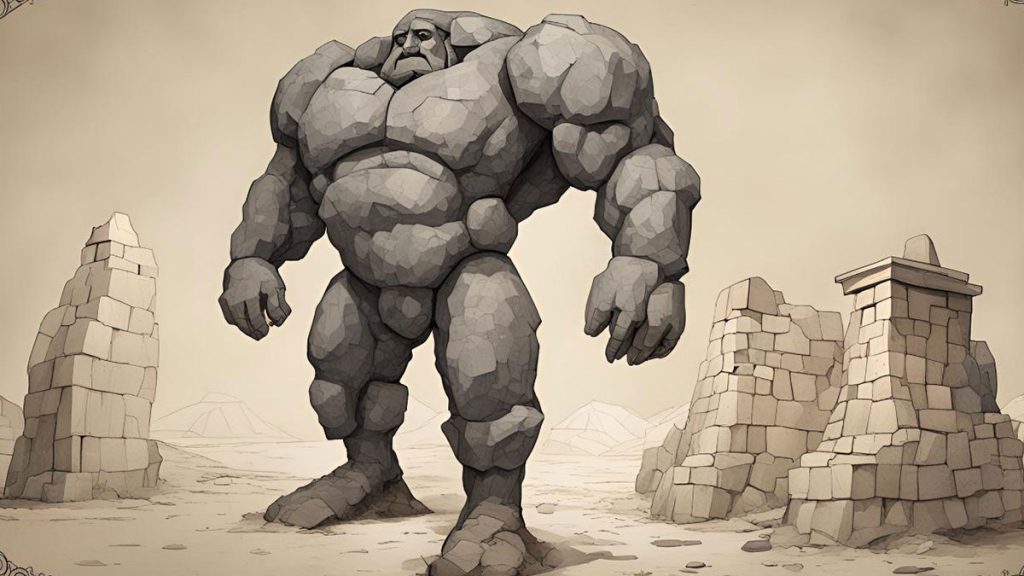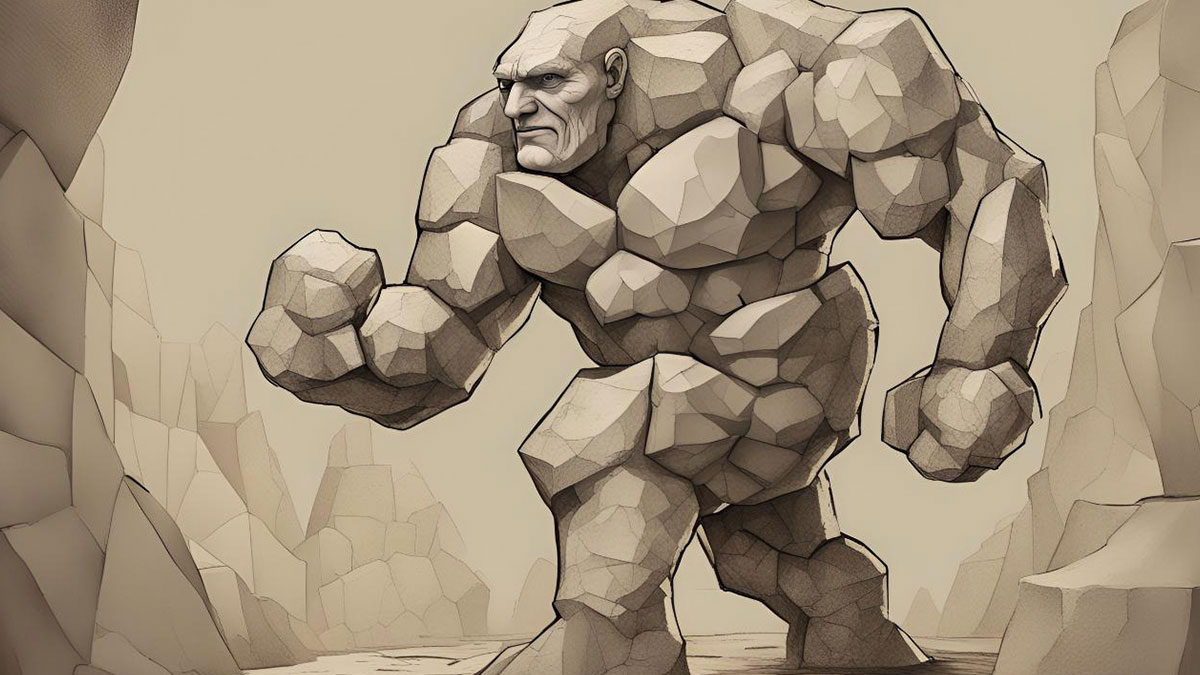A Golem is a creature from Jewish folklore brought to life from dust or clay by using religious incantations. It will then serve its master, performing any task asked of it. The Golem has no soul and cannot speak, but it is immensely strong and can only be killed when its creator reverses the incantation. The Golem could perform a wide variety of tasks, from protecting the Jewish community from persecution to performing daily chores such as baking bread or washing clothes.
The Golem is created with the aid of Sefer Yetzirah, otherwise known as the Book of Creation, an ancient manuscript on Jewish mysticism. The origin of Sefer Yetzirah is unknown, but it is thought to date back at least to the Talmud era in the 2nd century AD, although some historians argue it comes from the 2nd century BC.
To create a Golem, a Rabbi must first mold a human-like figure using clay, dust, or wood before using the Sefer Yetzirah to devise a combination of letters that invoke the name of God. Different sources have suggested different combinations of letters, such as “shem” or “emeth.” If this sounds confusing, that is probably because the process is supposed to be esoteric, which is only known to a few religious experts called Kabbalists. The word shem or emeth or another combination is then written on a parchment and either pinned to the Golem’s head or placed in its mouth, which animates the Golem. To kill the creature and return it to dust, the creator must pin “meth,” meaning death, to its head or remove the parchment from its mouth.
Once alive, the Golem mechanically follows its creator’s wishes without complaint. It grows bigger and bigger and, in many stories, causes problems for its creator. There were fears that if a Golem were allowed to exist unchecked, it would eventually come to threaten the world. The Golem legend is thought to have influenced the Frankenstein story. The majority of tales featuring Golems originated with the Ashkenazi Jews in central and eastern Europe in the Middle Ages.
The origin of the Golem legend
The earliest known reference to a “Golem” is in the Hebrew Bible, in Psalms 139:16. The verse reads, “Thine eyes did see my golem (embryo), yet being unformed; and in Thy Sefer (Book) all the yamim (days) ordained for me were written down, when as yet there were none of them.” In this context, Golem is another word for an embryo or something that is as yet unformed.

The Talmud, the primary source of Jewish religious law, features Golems. In one instance, the prophet Jeremiah reportedly created one of the creatures. On another occasion, a group of rabbis and kabbalists (Jewish mystics) became hungry while on a journey, so they used the Golem ritual to create a lamb to consume.
Medieval era saw a surge in Golem legends
However, the legend of the Golem, as known today, really came into being in the Medieval period. The most famous Golem of all was created by 16th-century rabbi Judah Loew ben Bezalel of Prague. Rabbi Loew made the creature because the Prague Jews were encountering persecution and had come under direct attack. The Golem, which Rabbi Loew created using clay, also helped out with various chores. There are two distinctive versions of what happens next. In one version, the Golem grows bigger and bigger and begins to run amok, attacking innocent people. Rabbi Loew was forced to remove the shem from its mouth, causing the Golem to collapse into dust.
The second version of the story is a bit more mundane; every week just before Sabbath, Rabbi Loew would remove the shem, thereby ‘switching off’ his Golem so as not to risk it disturbing the holy period. However, one week, the Rabbi forgot and had to chase after the Golem. He caught up to it just in time outside the synagogue and managed to destroy it before it caused any problems. Legend states that the Golem’s remains are still in the attic of the Altneushul synagogue in Prague and can be activated whenever needed.
Another famous legend, also from the 16th century, involves Rabbi Elijah Ba’al Shem, a native of the Polish city of Chelm. Rabbi Elijah created a Golem by pinning the word of God to his clay creature, but unfortunately, it went horribly wrong. The Golem became so out of control that Elijah feared it would destroy the world. After an epic struggle, Elijah eventually removed the parchment from the Golem’s forehead, returning it to dust. In one version of the story, Elijah was crushed to death by the falling shards of the Golem.

The 11th-century Spanish Jewish poet and philosopher Solomon ibn Gabirol is rumored to have created a Golem as a maid to help him with his daily household chores. The king was reportedly angered by Solomon creating a lifeform and ordered him to be punished, but the poet escaped punishment by turning the Golem back into dust.
Finally, around 1800, in the town of Dorhiczyn in modern-day Belarus, Rabbi David Jaffe created a Golem to bake bread on the Sabbath. Contrary to Rabbi Loew’s Golem, Rabbi Jaffe appeared to have no problem with his Golem performing tasks on the holy day and had actually created it for that purpose. Unfortunately, the Golem made a mistake with one of the bread ovens, causing a fire that destroyed the entire town.
The Golem could have multiple symbolic meanings
The Golem legend is often seen as symbolic. In some ways, it is simply a way for Jewish mystics to feel closer to God. However, on a large scale, the Golem often represents the fears and worries of a Jewish community. The Jewish Museum in Berlin states, “Central to the golem legend is the human desire to create, together with a range of themes including creativity, control, power, and salvation. The Golem also symbolizes each era’s dreaded dangers and hopes for redemption.”
A feminist view of Golem symbolism argues that the creatures are a veiled code for the role of women in Jewish society. Indeed, the literal meaning of the word Golem as something “unformed” was sometimes applied to unmarried women, as they were considered incomplete beings. In the legends, Golems are usually used to carry out homemaking tasks, roles traditionally assigned to women.
Is it possible that the Golem has a history extending back further in time than Jewish texts? LearnReligions.com argues that many Bronze Age mythologies depict God as a potter, making humans from clay. They point to the Temple of Luxor in Egypt (constructed approximately 1400 BC), which features the creator god Khnum at his potter’s wheel, making human bodies from clay.
References
Britannica.com, “Golem,” accessed June 21, 2024.
LearnReligions.com, “What Is a Golem? Introduction to the Creature From Jewish Folklore,” accessed June 11, 2024.
Juedisches Museum Berlin, “Golem,” and “The Golem in Berlin,” accessed June 11, 2024.
Michaelson, Jay. “Golem: Making men of clay: Can imitating God extend to the creative realm?” in MyJewishLearning.com, accessed June 11, 2024.
Oreck, Alden. “Modern Jewish History: The Golem,” in JewishVirtualLibrary.org, accessed June 11, 2024.
The Jewish Encyclopedia, “Golem,” edited by Cyrus Adler and Isidore Singer (1907), Pub.: Funk & Wagnalls. Accessed June 14, 2024.
